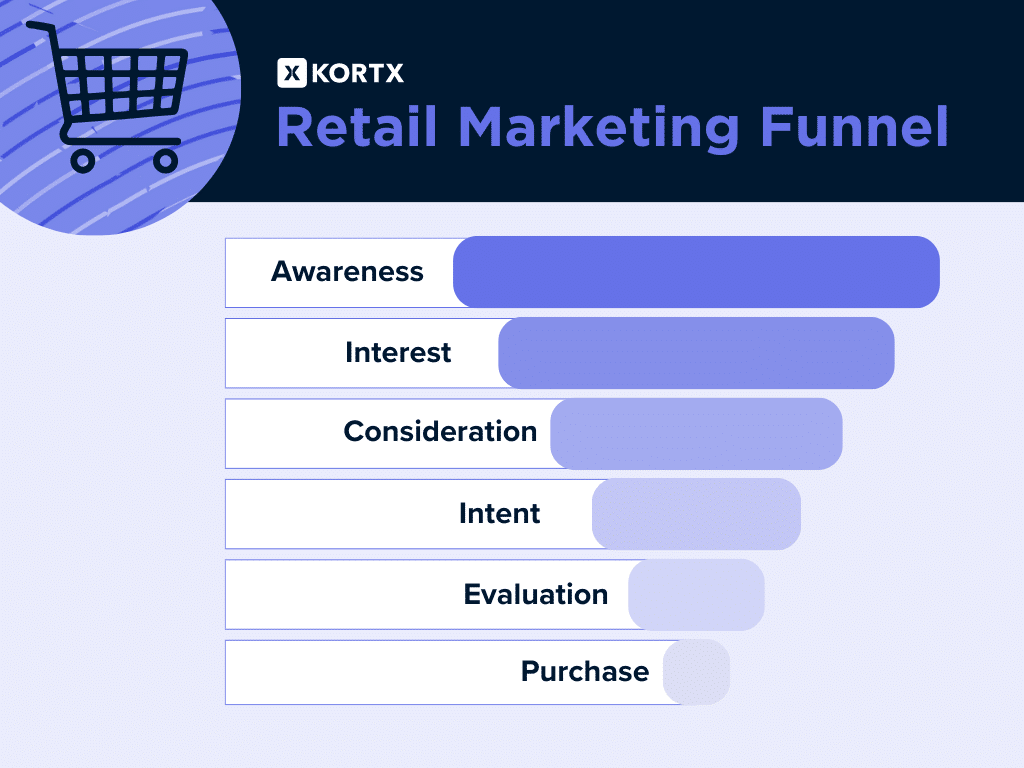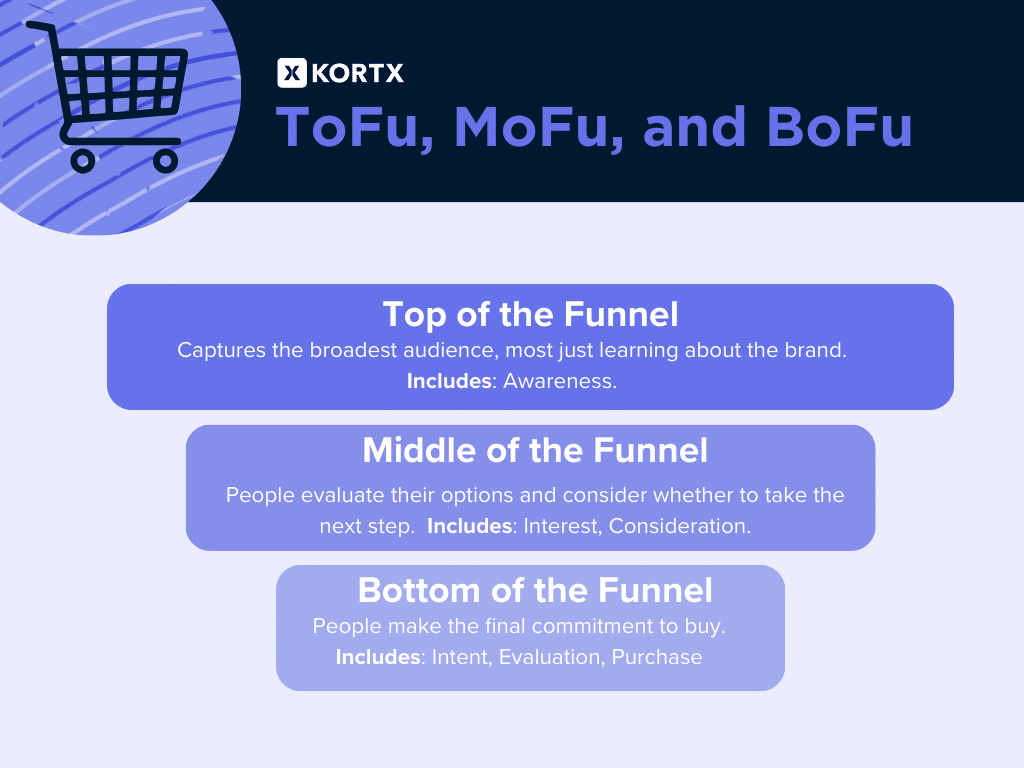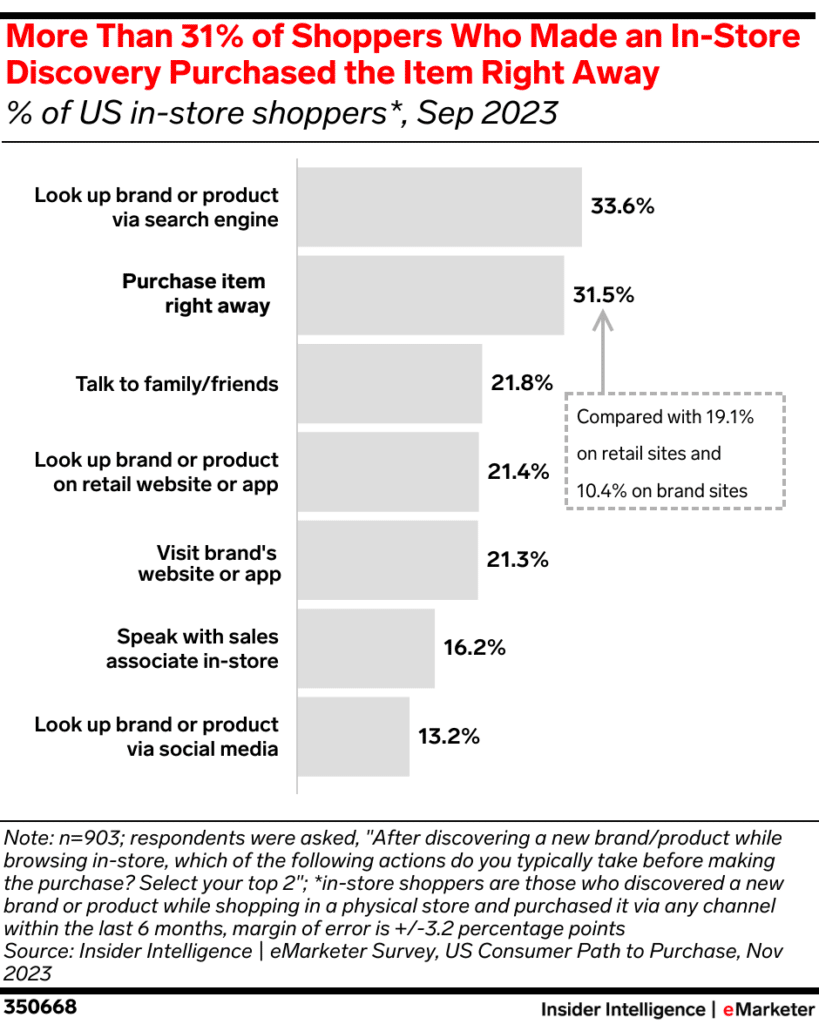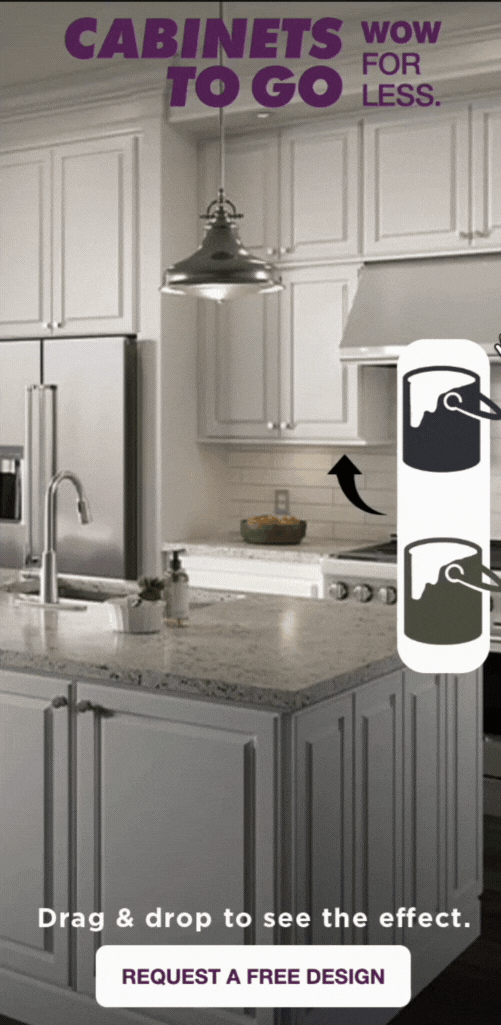The way consumers shop is changing. Some prefer to shop online, some in-store, and others prefer a mix of both.
The retail industry integrates both experiences to meet these preferences. In 2023, 82.7% of the top 500 retail chains adopted BOPIS (Buy Online, Pickup In-Store), increasing from 76.3% in 2022.
Modern retail digital marketing focuses on a more flexible, customer-centric approach, blending multiple experiences to meet various consumer expectations.
Explore retail marketing, its definition, key trends, and the types shaping the industry.
What is Retail Marketing?
Retail marketing focuses on promoting and selling goods or services to consumers to drive their interest and purchases. It also aims to earn their loyalty through an excellent customer experience. It includes strategies like advertising, promotions and sales, and even your store layout, all aimed at creating a positive shopping experience that fosters customer loyalty.
The Importance of Retail Marketing
Retail marketing helps businesses find and win over loyal customers, ultimately influencing their growth and success.
Some of the key reasons retail marketing is important include:
1. Driving Sales & Profitability
Retail marketing increases sales by attracting potential customers and converting them into buyers. Strategies like targeted advertising and personalized promotions can encourage buyers to make a purchase.
91% of consumers feel compelled to purchase when a brand personalizes its communication with them. These curated marketing messages appeal to who they are, what they like, and what they are most likely to buy.
2. Building Brand Identity & Loyalty
Customers expect a steady experience across all brand interactions. Retail marketing can establish a strong brand identity by consistently communicating the brand’s values, mission, and personality across all channels.
The stronger your brand identity and the more it resonates with your target audience, the more customers will choose you over competitors.
A Lucidpress report found that 85% of organizations have brand guidelines, but only 31% consistently enforce them. Consistency is key to attracting loyal customers, as the report found it contributes 10%-20% more revenue growth for companies.
3. Adapting to Market Trends & Consumer Behavior
Staying relevant and competitive in the retail market requires an understanding and adaptation to changing market trends and consumer behaviors.
A major trend is the increasing variety of offline and online channels to connect with customers. In fact, 81% of retailers are looking to expand the number of digital channels they sell on, recognizing the growing need to connect with customers no matter where they are.
Why must retailers expand where they sell?
“Amid economic uncertainty and changing consumer preferences, the current macro landscape is giving retailers a hard reality check that it’s not enough for brands to be present in one place. Beyond a physical store and online presence, brands need to be seen and heard…where consumers can come to be inspired and to shop.”
4. Consumer Engagement
Successful retail marketing engages consumers, creating an emotional connection between the customer and the brand. Engaged customers are likely to become repeat buyers and brand advocates.
Twilio’s The State of Customer Engagement Report found that brands highly advanced in personalization, First-Party data use, and omnichannel engagement saw an average revenue increase of 123% from customer engagement.
🛍️ Total retail sales worldwide in 2023
In 2023, global retail sales amounted to around 29.29 trillion U.S. dollars, up from 26.37 in 2021.
Types of Retail Marketing
Businesses and brands use several types of retail marketing strategies and channels to reach and engage with customers. Each type of retail marketing has its own set of strategies, techniques, and best practices, and many retailers use a combination to create a successful marketing mix.
Here are the most common types:
1. In-Store Retail Marketing
In-store marketing uses physical customer interaction with products and immersive brand experiences in a brick-and-mortar setting. It includes visual merchandising, in-store promotions, and sales events.
2. Digital Retail Marketing
Digital retail marketing utilizes digital platforms to sell products. This includes e-commerce websites, online marketplaces, and mobile apps. Strategies involve SEO, email marketing, and online advertising.
3. Social Media Marketing
Social media marketing uses social platforms like TikTok, Instagram, and Facebook to build brand awareness, engage with customers, and even directly sell products through social commerce features.
The Retail Marketing Funnel: Understanding the Customer Journey
Before we review common retail marketing strategies, the first step is understanding the non-linear customer journey, especially for smaller price tag options.

Digital Retail Marketing Funnel
Each stage fits into a three-stage funnel model:

The widest part of the funnel (TOFU) captures the biggest group of people interested in what you sell, while the smallest part (BOFU) includes the group most likely to convert.
However, with the customer journey no longer linear, developing a full-funnel strategy covering all touchpoints is vital for a cohesive experience.
Retailers effectively guide potential customers through their unique journeys by focusing on a full-funnel approach.

Your First-Party Data is Key for Full-Funnel Retail Marketing
A full-funnel retail marketing approach focuses on First-Party data, a brand’s richest dataset, which includes both online (eCommerce website data, CRM lists, etc) and potentially offline sources (brick-and-mortar data, foot-traffic study data, loyalty records, etc).
Traditionally, marketers relied heavily on Third-Party data sets, offering broad insights with limited control and lacking the direct audience connection and quality assurance that First-Party data provides.
With Third-Party cookie deprecation looming in 2024, privacy regulations mean user data will become increasingly inaccessible and less reliable. Unlike Third-Party data, First-Party data offers complete control and a more accurate, up-to-date reflection of your customer’s behavior.
📚 Related Article: Welcome to the Cookieless Future: Testing & Tracking without Third-Party Data: Read more about First-Party data’s importance amid a cookieless future.
With First-Party data, advertisers can tailor creative messaging to consumer interactions. Marketers should adapt their messaging based on how consumers actively engage with the site or even specific ads.
Example: If a consumer frequently views pages on camping tents, advertisers can tailor ads showcasing their tent promotions. Similarly, if a user often watches cooking videos, marketers might personalize ads with kitchenware deals or recipe book promotions.
First-Party interactions enrich your data and are instrumental in continuing and refining your marketing message, contributing to your company’s overall data maturity.
Emphasizing a full-funnel approach recognizes the customer’s journey from awareness to conversion. First-Party data is crucial for an adaptive, personalized retail strategy.
Why is personalization so important for customers in 2024?
“Trust is the currency of modern commerce. Mastering hyper-personalization is not just about marketing precision; it’s about demonstrating a genuine understanding and commitment to the customer’s unique needs, thereby enhancing trust.”
Retail Marketing Across Industries & Strategies
Every retail marketing industry uses a full-funnel approach as well as First-Party data. However, they vary in customer engagement with products, decision-making for purchases, and the unique aspects of the buying journey in each sector.
For example, the urgency and decision-making process for purchasing everyday items like groceries or personal care products significantly differs from high-value items like furniture or electronics.
Review the most popular retail industries and the variations in their funnel strategies below.
1. Home Goods/Furniture
Home Goods/Furniture retail encompasses products ranging from small home decor to large furniture for residential spaces. This includes sofas, beds, tables, lamps, curtains, and other items that contribute to the aesthetics and functionality of a home.
How the Funnel & Funnel Strategies Differ:
The funnel for home goods and furniture is typically longer, as these are considered high-cost items that consumers deliberate over more carefully. The consideration phase is extensive, often involving physical showroom visits after initial online research.
Recommended Tactics:
- Cross-Device Audience Targeting: Leverage KORTX’s Device Graph for precise audience targeting across multiple devices.
- Content Marketing: Utilize blogs, videos, and social media to provide inspiration and information on home decoration and furniture selection.
- Virtual Showrooms: Implement augmented reality or virtual reality into ads to allow customers to visualize furniture in their homes.
- Customer Reviews and Testimonials: Feature user-generated content to build trust and guide decisions.
- Retargeting Campaigns: Use online behavior to retarget customers with relevant ads.

KORTX’s Cabinets to Go Custom Rich Media Ad allowed users to interact with the brand virtually.
🔎 Furniture Case Study Success: How KORTX’s Custom Rich Media Unit Drove Over 8,000 Conversions for Cabinets to Go: Discover how Cabinets To Go partnered with KORTX to create a custom unit highlighting various product offerings.
🔎 More Furniture Case Study Success: KORTX’s Device Graph & NFM: 9.8X ROAS: Read more about how NFM significantly boosted its online sales and return on ad spend by implementing KORTX’s cross-device audience targeting.
2. Consumer Packaged Goods (CPG)/Grocery
Consumer Packaged Goods (CPG) and grocery retailing involves the selling of everyday use items such as food, beverages, toiletries, and cleaning products.
How the Funnel & Funnel Strategies Differ:
The purchase cycle for CPG and groceries is short, with frequent, often habitual purchases. The focus here is on convenience, price, and brand loyalty. Marketers must emphasize promotions, loyalty programs, and ease of purchase through quick delivery options or efficient in-store layouts.
First-Party data is crucial for understanding purchasing habits and timing communications for when the customer is most likely to need a refill or open to trying new products.
Recommended Tactics:
- Loyalty Programs: Encourage repeat purchases with rewards and personalized discounts.
- Mobile Apps: Offer shopping lists, recipe suggestions, and in-app exclusive deals.
- Flash Sales and Promotions: Use time-limited offers to drive quick purchases.
- Location-Based Marketing: Target customers near physical stores with special offers.
🔎 CPG Case Study Success: How KORTX Helped NatureSweet, a CPG brand, Improved Brand Lift: Learn more about how KORTX’s strategic digital solutions drove success for NatureSweet through a diversified media mix, achieving significant brand lift and exceeding video completion rates.
3. Clothing
The clothing retail industry includes the sale of apparel, footwear, and accessories for all ages and genders. Clothing shopping can range from impulsive to highly deliberate, depending on the type of clothing and the consumer’s engagement with fashion.
How the Funnel & Funnel Strategies Differ:
The funnel strategies must accommodate quick buys and detailed consideration phases for more expensive or style-specific items. Retailers also need to consider in-store and online tactics since shoppers prefer a mix of both when shopping for clothes.
Recommended Tactics:
- Influencer Partnerships: Collaborate with fashion influencers to reach target audiences.
- Virtual Try-On: Use technology for customers to visualize clothes on themselves.
- BOPIS (Buy Online, Pay In-Store): Allow customers to purchase on your website and pickup in-store.
- Flexible Return Policies: Minimize purchase hesitancy with easy returns.
- Seasonal Campaigns: Align with fashion cycles and trends to keep offers relevant.
4. Electronics & Appliances
This retail industry involves the sale of consumer electronics and household appliances, ranging from smartphones and laptops to refrigerators and washing machines.
How the Funnel & Funnel Strategies Differ:
Given these products’ higher price points and technical nature, customers often conduct thorough research before purchase, making the consideration phase quite long. Marketers often leverage detailed content strategies and targeted remarketing to guide consumers through the funnel.
Recommended Tactics:
- Detailed Product Guides: Provide comprehensive guides and comparison tools.
- Customer Support & Warranties: Emphasize post-purchase support in marketing.
- Demo Videos: Show products in action to highlight features and ease of use.
- Targeted Email Campaigns: Send personalized recommendations based on past searches and purchases.
5. Health & Beauty
The health and beauty retail industry includes the sale of cosmetics, skincare, fragrance, personal care, and wellness products, catering to various aspects of health and personal appearance.
How the Funnel & Funnel Strategies Differ:
The purchase cycle can vary from quick purchases for daily products to more considered luxury or specialty items purchases. Personalization and understanding individual health or beauty concerns through data are key to creating an effective full-funnel marketing strategy.
Recommended Tactics:
- Sampling Programs: Allow customers to try before they buy, especially for cosmetics.
- User-Generated Content: Encourage customers to share their experiences and results.
- Tutorial Content: Create how-to guides and videos for products.
- Personalization: Use First-Party data to recommend products based on individual preferences and needs.
6. Specialty Retail (Hobbies/Sporting Equipment)
Specialty retail focuses on specific hobbies or activities, selling products like sporting goods, musical instruments, craft supplies, or outdoor gear. These stores cater to enthusiasts and professionals seeking specialized products.
How the Funnel & Funnel Strategies Differ:
Customers in this segment are typically well-informed with specific needs. Marketing strategies should enhance loyalty and engagement and provide personalized recommendations.
Recommended Tactics:
- Community Building: Create forums, clubs, or events to foster a sense of community.
- Expert Endorsements: Use endorsements from professionals or respected figures in the industry.
- Workshops and Demos: Offer in-store or virtual classes and demonstrations.
- Niche Targeting: Use detailed customer data to provide highly targeted product recommendations.
Customer-Centric Retail Marketing
With increasing retail chains adopting flexible strategies like BOPIS, the industry is prioritizing a customer-centric approach. As businesses adapt to these changes by embracing comprehensive retail marketing strategies, they meet consumer expectations, drive sales, and foster brand loyalty. The ongoing shift towards integrated retail experiences signifies a future where flexibility, personalization, and consumer engagement are at the forefront, shaping the path for both retailers and consumers in an increasingly digital world.
🚀📈 2024 is Your Year for Increased Sales
KORTX can elevate your retail marketing strategy, delivering personalized, data-driven solutions to engage customers and drive sales.
About the Author
Erik Stubenvoll is a Managing Director at KORTX with over 20 years of experience. When he is not learning about his client’s goals, he is on the sidelines with his wife at his daughter’s softball and soccer games or on the golf course.

